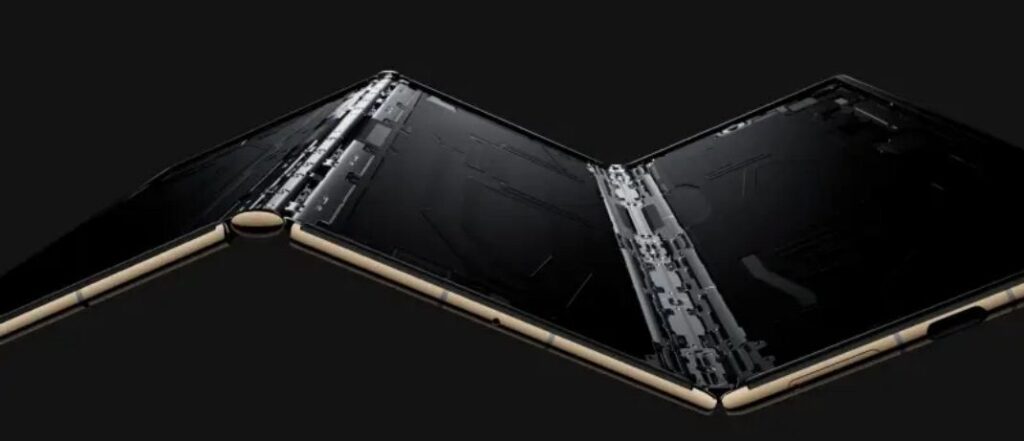The foldable phone market is evolving with innovative devices like the Huawei Mate XT Ultimate Design, categorized as tri-fold or triple-foldable phones. Reports suggest that Samsung is working on its own version of this form factor, which might launch in 2025. However, the real breakthrough lies in a new component developed by Samsung that could transform this category of devices: a foldable battery.
Please follow us on Facebook and Twitter.
According to a leak from VeePN and xleaks7, Samsung has patented a foldable battery designed for devices with more than one hinge. While it is unclear when this technology will be available in widely accessible devices, it represents a significant step forward for the future of foldable phones.
According to the report, Samsung’s new battery features three folding points, making it suitable for more complex devices like tri-fold smartphones. While specific details about this component are not provided, it is described as a single-cell accumulator. Additionally, it is expected to be made with flexible materials, ensuring reliable performance without compromising its structure or functionality.
The main advantage of a foldable battery is its ability to distribute across the internal space of devices. By mirroring the folds of a smartphone, it can optimize the use of internal space without reducing battery capacity.

Samsung Patents a Foldable Battery for Mobile Devices
Foldable phones have made significant progress in recent years, becoming thinner while maintaining high performance and advanced features. However, adapting traditional batteries to these innovative designs comes with its own set of challenges.
Since foldable devices typically have multiple screens and larger panels, they require more energy, resulting in shorter battery life compared to conventional smartphones. To minimize energy limitations, Samsung and other manufacturers often equip foldable phones with two interconnected batteries. Despite this approach, their battery capacity still falls short of standard smartphones. For instance, the Galaxy Z Fold 6 has a 4,400 mAh battery, whereas the Galaxy S24 Ultra boasts a 5,000 mAh battery.
A foldable battery, like the one patented by Samsung, could provide tri-folds—or any other foldable devices—with greater energy capacity. It could also contribute to creating devices with more folds that maintain a sturdy and reliable structure.
For example, the Huawei Mate XT Ultimate Design features two batteries with a combined capacity of 5,600 mAh in an impressively thin chassis. However, to achieve this design, the Chinese manufacturer had to compromise on durability, particularly in terms of shock and drop resistance. A foldable battery like Samsung’s could address this issue, potentially making foldable smartphones less fragile.
It’s important to note that Samsung patenting a foldable battery doesn’t necessarily mean it will be implemented right away. While there is speculation it could debut in the brand’s first tri-fold device, no official confirmation has been provided. It’s worth remembering that tech companies frequently patent new innovations, but not all of them reach the consumer market. Time will tell if Samsung takes a bold step forward with this promising component.





